
Trowbridge is the county town of Wiltshire, England, on the River Biss in the west of the county. It is near the county border with Somerset and lies 8 miles (13 km) southeast of Bath, 31 miles (50 km) southwest of Swindon and 20 miles (32 km) southeast of Bristol. The parish had a population of 37,169 in 2021.

Warminster is a historic market town and civil parish in south-west Wiltshire, England, on the western edge of Salisbury Plain. The parish had a population of 18,173 in 2021.

Westbury is a market town and civil parish in west Wiltshire, England. The town lies below the northwestern edge of Salisbury Plain, about 4 miles (6 km) south of Trowbridge and a similar distance north of Warminster.

Wiltshire County Council was the county council of Wiltshire in the South West of England, an elected local Government body responsible for most local government services in the county.
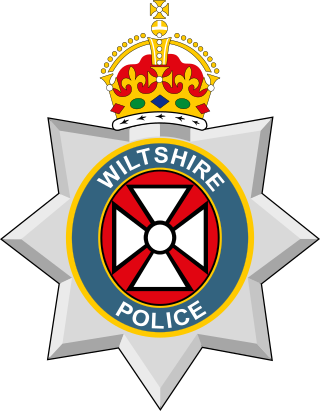
Wiltshire Police, formerly known as Wiltshire Constabulary, is the territorial police force responsible for policing the county of Wiltshire in South West England.

Upton Lovell is a village and civil parish in Wiltshire, England. It lies on the A36, in the Wylye valley about 5 miles (8.0 km) southeast of Warminster. The parish is on the left (northeast) bank of the river, and stretches for over two miles northeast onto Salisbury Plain.
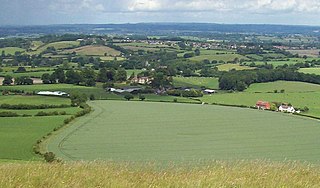
Corsley is a hamlet and civil parish 3 miles (5 km) west of Warminster in Wiltshire, England. The parish is on the county border with Somerset; the Somerset town of Frome is about 3 miles (5 km) to the northwest. The largest settlement in the parish is Corsley Heath, which is on the A362 Warminster-Frome road.

Horningsham is a small village and civil parish in Wiltshire, England, on the county border with Somerset. The village lies about 4 miles (6 km) southwest of the town of Warminster and 4+1⁄2 miles (7 km) southeast of Frome, Somerset.
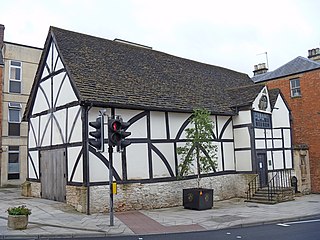
The Yelde Hall is a public facility in the Market Place, in Chippenham, Wiltshire, England. The building, which was the meeting place of Chippenham Borough Council, is a Grade I listed building.
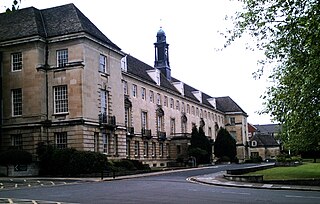
County Hall is a municipal building in Bythesea Road, Trowbridge, Wiltshire, England, completed in 1940. It is the headquarters of Wiltshire Council.

Bourne Town Hall is a municipal building in North Street, Bourne, Lincolnshire, England. The town hall, which was the headquarters of Bourne Urban District Council, is a Grade II listed building.

Trowbridge Town Hall is a municipal building in Market Street, Trowbridge, Wiltshire, England. The town hall, which was the headquarters of Trowbridge Urban District Council, is a Grade II listed building.

The first-ever Elections to Wiltshire County Council were held on 23 January 1889. Sixty members were up for election, with up to twenty more voting aldermen to be appointed by the new council.
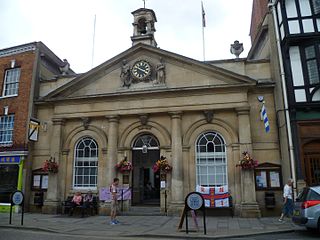
Tewkesbury Town Hall is a municipal building in the High Street in Tewkesbury, Gloucestershire, England. The building, which is the meeting place of Tewkesbury Town Council, is a Grade II* listed building.

Melksham Town Hall is a municipal building in the Market Place in Melksham, Wiltshire, England. The structure, which was built as a cheese market and is now the home of Melksham Town Council, is a Grade II listed building.
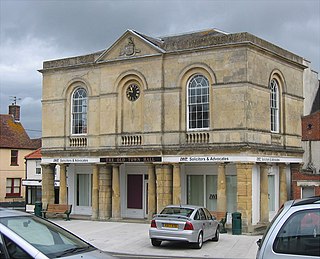
The Old Town Hall is a municipal building in the Market Place in Westbury, Wiltshire, England. The structure, which was used as the local market hall and as a courtroom, is a Grade II* listed building.

Rothesay Town Hall and County Buildings is a former municipal building in Castle Street, Rothesay, Scotland. The structure, which was the meeting place of Rothesay Burgh Council and of Bute County Council, is a Category B listed building.
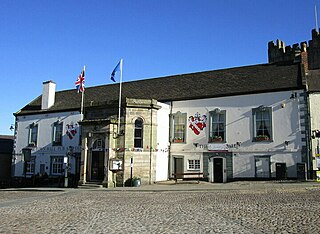
Richmond Town Hall is a municipal building in the Market Place, Richmond, North Yorkshire, England. The structure, which is the meeting place of Richmond Town Council, is a grade II listed building.



















